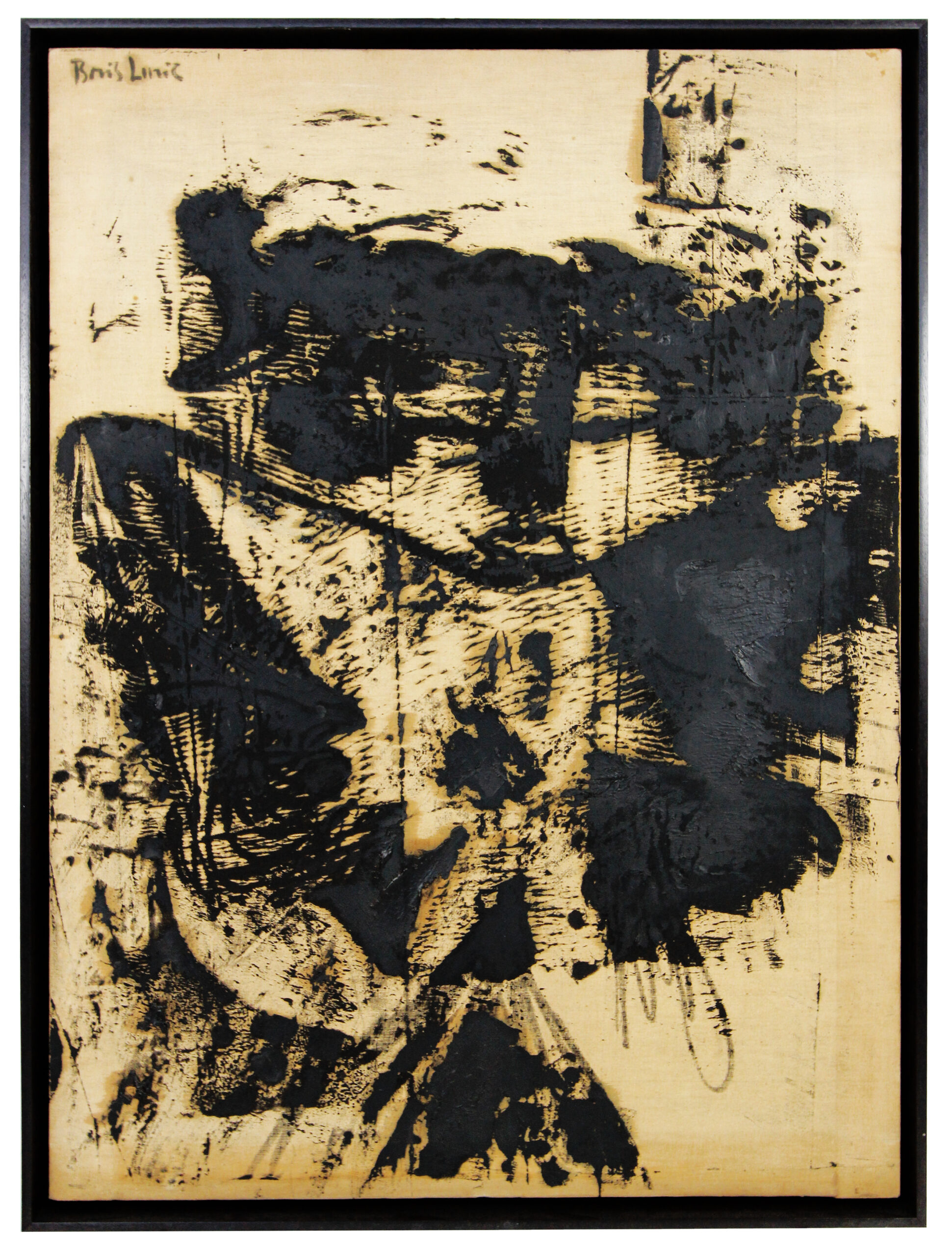How to cope with grief, anger, pain and nonconformity? Having most of his family executed by the nazis during World War II, Boris Lurie (1924-2008) spent his life dedicated to building a restless and disquieting plastic work. Starting at April 5th, an important set of his work will be presented by the Jewish Museum of São Paulo, following a series of exhibitions held across Europe, the US and Latin America.
Curated by Felipe Chaimovich and developed with support from the Boris Lurie Foundation, “Boris Lurie – Art, Grief and Survival” traverses the artist’s legacy through 44 collages, drawings, paintings and sculptures guided by the memory of the events and crossed by a strong erotic component, sometimes sadomasochistic.
Born in Leningrad, Russia, in 1924, Boris lived his childhood and teenage years in Riga, Latvia. In 1941, his mother, maternal grandmother, youngest sister and first girlfriend were killed after being imprisoned at an evacuation camp. Lurie and his father, in turn, went through the Lenta and Salaspils labor camps and the Stutthof and Buchenwald-Magdeburg concentration camps and survived the Shoah. Freed in 1945, they emigrated to the U.S.
It was in New York City, where he emigrated to with the help of an older sister, that Lurie began the artistic development that would allow him to shape his memory in new ways. This process is felt, for example, through “Portrait of My Mother Before Shooting”, from 1947, a recalling of the maternal figure and key work in his journey of mourning/creation. From this time on, image of women became permanent in his work, as well as the yellow star of David – an element that marked Jewish people during the Nazi regime and which the artist continued to use in his clothes after emigrating to the United States.
“Boris Lurie produced paintings and objects with the yellow star, including using it in underwear, such as underpants and corsets”, writes the curator, pointing out the inseparability between death and desire in the artist’s work. “In his refusal to forget, his garment continued to witness a relentless survival”, Chaimovich complements.
Attending the New Yorker art school Art Students League and having worked with gestural painters such as the French Pierre Soulages, Lurie used advertising language and the North American mass media to work on his “pin-ups”. From 1955 on, he produced collages criticizing the objectification of the female body and, in 1960, he founded No!art, a movement against the values of the consumer society at the time created together with Sam Goodman and Stanley Fisher. Back in Riga in 1975, for the first time since World War II, he began writing a travel diary, which, together with a fiction novel, were published posthumously.
“An artist who survived not sustained by art, but because of it”, suggests Felipe Arruda, Executive Director of the Jewish Museum of São Paulo. “An artist who confronted and re-elaborated all throughout his life the images of the horror witnessed, who vocalized in his work the protest against antisemitism, who manipulated sex signs, propaganda, consumerism, power and death to build a critical artwork, and unavoidably, sometimes disturbing.”
